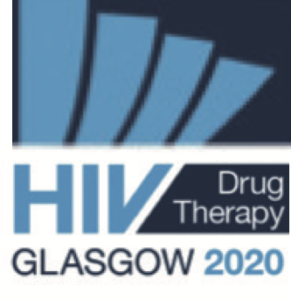Weight gain with dolutegravir-based ART in Nigerian cohort
14 October 2020. Related: Conference reports, Side effects.
 Polly Clayden, HIV i-Base
Polly Clayden, HIV i-Base
ART-experienced adult participants, experiencing side effects or showing signs of contraindications with NNRTIs, who switched to tenofovir disoproxil fumarate/lamivudine/dolutegravir ( TDF/3TC/DTG; TLD), at three pilot sites in Nigeria were enrolled – starting July 2017. Those who completed 24 months of treatment with TLD by end of March 2020 were included in the analysis.
The study was originally designed to evaluate the acceptability (including side effects) of TLD among early adopters at 2, 6 and 12 months from time of switch. Acceptability of the new regimen was very high: 100% of participants said that they preferred TLD to their previous ART. Increase in appetite was reported more frequently than other side effects in the survey at: 2 months, 20%; 6 months, 19%; and 12 months, 15%.
This reported change in appetite (presumably plus reports of weight gain with DTG elsewhere) led the investigators to continue follow up of the participants beyond the original acceptability study and analyse weight gain more closely.
They looked at weight and BMI changes 6-monthly up to 24 months since switch, using generalised, estimated equations, adjusted for gender, age, baseline weight and facility clustering.
There were 271 participants in the acceptability study. Of these, 206 (76%) were ART-experienced and had weight and BMI data at baseline and at least one other time point.
Sixty-four per cent, were women, median age 47 years, 62% had a normal baseline BMI (median 22.9 kg/m2) and median weight of 61.7 kg; only 38 (23%) and 12 (7%) were overweight and obese at baseline. The majority (95%, n=130) were virally suppressed time of switch.
Overall there was a steady increase in the proportion of participants that gained 10% of baseline weight since switching, this proportion increased from 28% to 31% between 18 and 24 months, with a levelling off at 24 months. (All comparisons between time points p<0.01)
For participants with normal BMI at baseline there was a statistically significant increase in per cent of weight at 6, 12 and 18 months, followed by a decrease between 18 and 24 months. (All comparisons p<0.01)
Among overweight/obese participants there was no statistically significant increase until 18 months and then the proportion with weight gain started to increase. But this was a very small sample size.
Adjusted analyses did not find women more likely to have 10% or more weight gain (OR very close to 1). Younger participants (25 to <45 years) and older (55+ years) were more likely to have 10% or more weight gain compared to the 45 to <55 years age group.
comment
There were many limitations to this study, which were listed at the end of the presentation.
It was not a controlled trial nor was it initially designed to look at weight change, so it was underpowered to do so. There was also a lot of missing data and no consistency as to exactly how weight was measured – time of day, clothing etc.
The investigators also noted that not all participants (82%) had weights consistently documented, so there is potential for bias where weight is recorded in people who report weight change.
So although these findings are in some ways quite similar to that in other African studies, both large RCTs with week 96 data (ADVANCE and NAMSAL) do not report a levelling off and do find weight gain more likely among women.
References
Campbell J et al. Weight gain plateaus at 24-months follow-up for ART-experienced patients that switched to dolutegravir in a Nigerian early adopter cohort. HIV Glasgow – virtual. 5–8 October 2020. Oral abstract O112.

